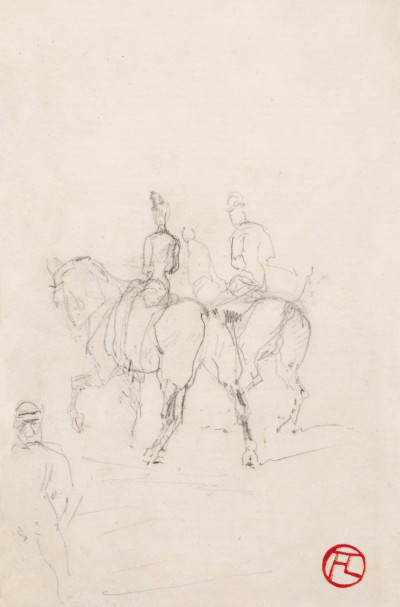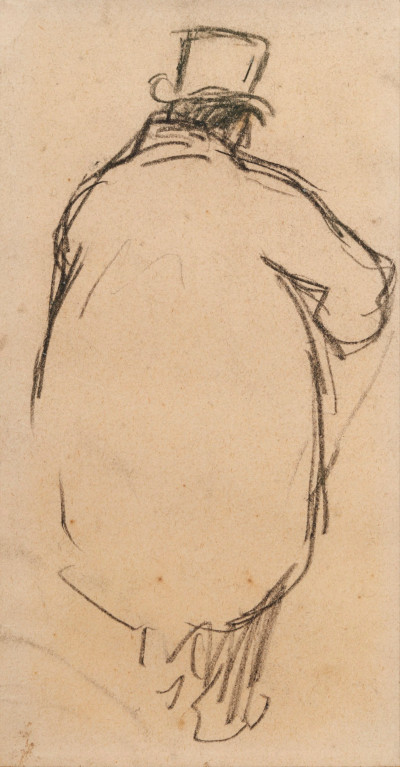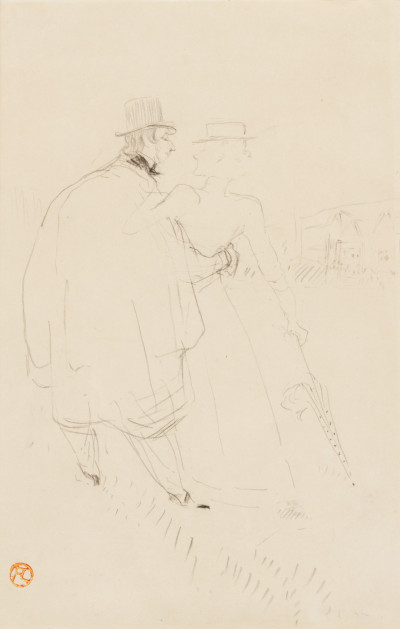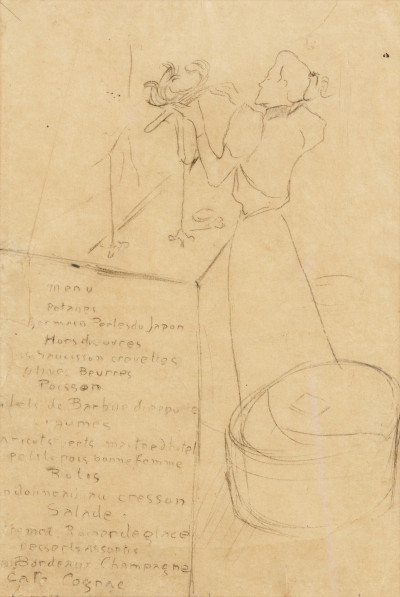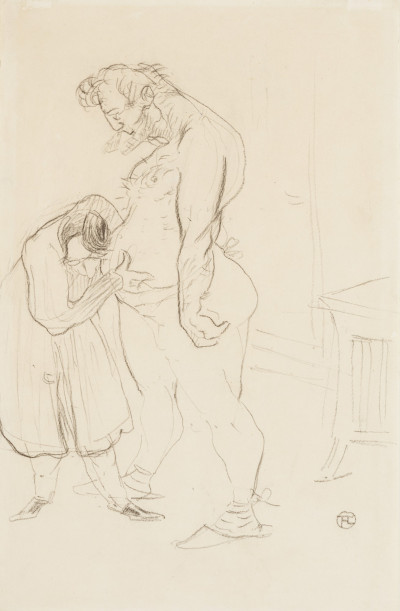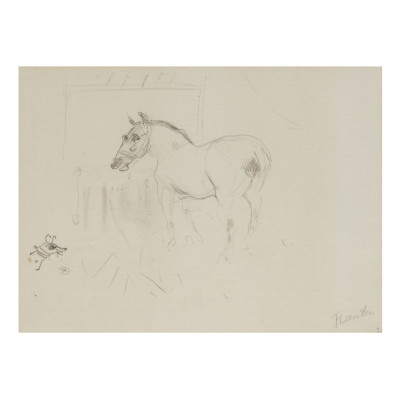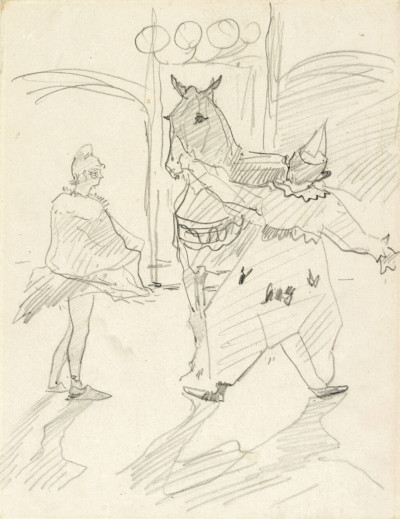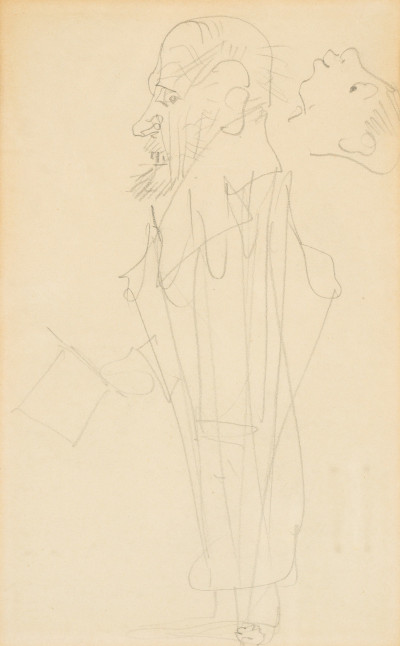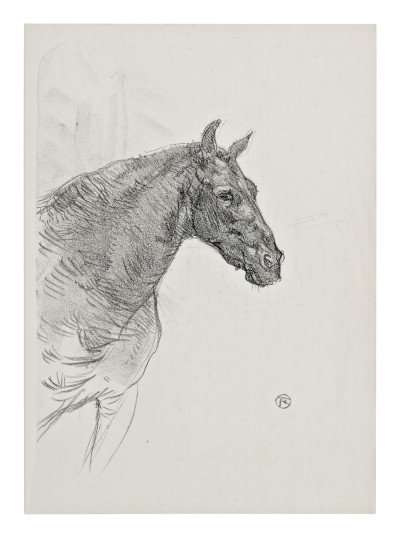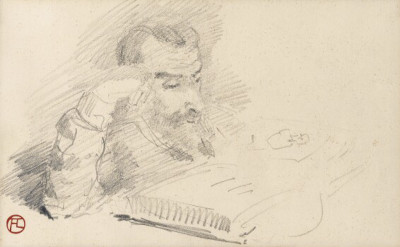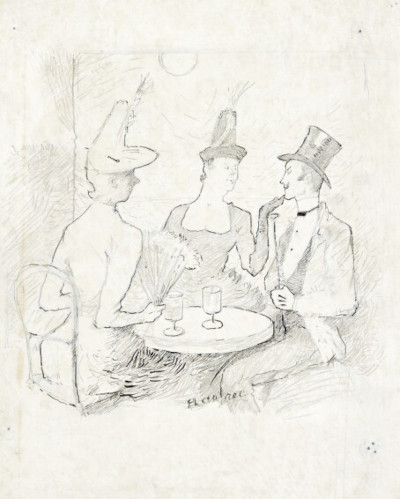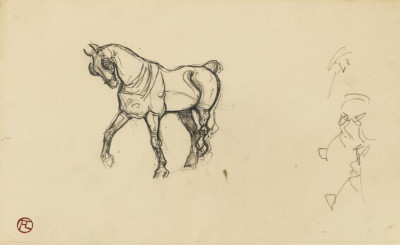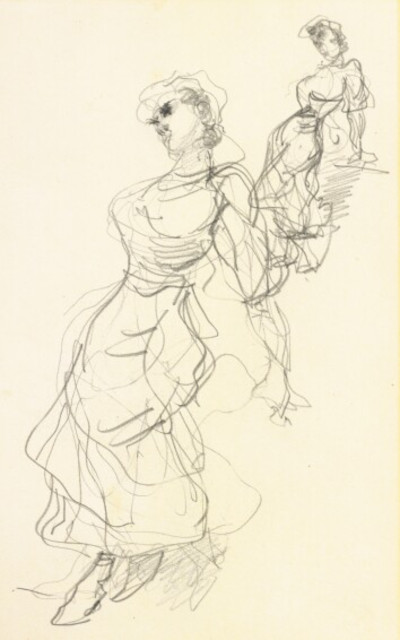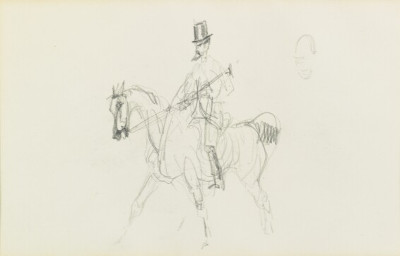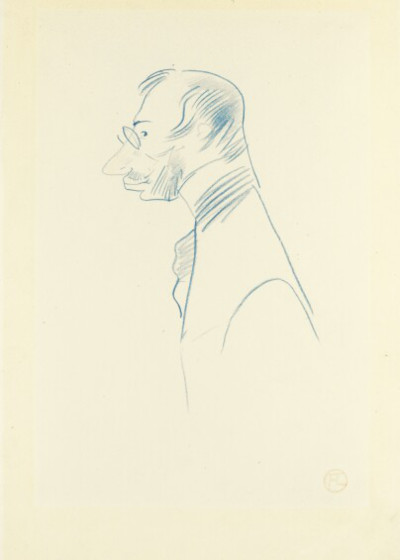Henri de Toulouse-Lautrec was a gifted draughtsman and many of his most famous artworks were originally designed within one of his many sketchbooks. He used simple strokes of pencil to lay out his ideas, before then developing them in oils and as lithographs.
The Impressionists would leave a strong influence on this artist, and he would later be classified as a Post-Impressionist in recognition of this. They were known to use pastels and crayons for some of their drawings and these would start to appear within Toulouse-Lautrec's work as well, including a portrait of his friend, Vincent van Gogh. Toulouse-Lautrec most loved to use pencil, creating portraits and compositional designs with just a few lines and many of these simple artworks have been documented within his oeuvre. Indeed, some study items for famous paintings such as At the Moulin Rouge and Moulin Rouge: La Goulue have been uncovered over the past century and these also would hold substantial value were they ever to appear at auction. The strong focus on the artist delivered by a number of notable exhibitions, as well as the museum dedicated to his career in the south of France, have helped to remind us of his considerable ability as a draughtsman.
The artist also used his drawing skills for the purpose of caricature, with one example including a series known as his Phylloxera drawings. This set of ink sketches captured the process of removing disease from his uncle's vineyard, with Toulouse-Lautrec demonstrating his strong sense of humour within these artworks. He also left behind a large number of sketchbooks from across his career which featured all manner of different drawings. A catalogue raisonne on his career was completed in the early 1970s and this comprehensively brought all of his attributed drawings together for the first time, though more will have appeared in the years that have passed since. That publication was only available in French, but other books more recently have covered specific mediums, such as his graphic works and lithographs. The artist's mother donated many items left in his possession to a museum in the south of France, and these include many of his drawings.
As someone who produced many paintings of humans and horses, practice was essential to the young artist. He could sit around his family's considerable estate and work without interruption. Later on, as he grew up, he would spend more time in the Parisien night life and from cafes and bars he would find new environments in which to work. Sketchbooks could be carried into some of these establishments and he would again be left alone to work, with many regulars being entirely comfortable with having the artist around. He would visit these places regularly, become well known and popular, allowing him to produce intimate portraits with performers and patrons who were already known to him. He had a studio close by in the district of Montmartre, and could develop his ideas there. In some cases he would invite models directly to that location in order to work on oil works without the need for preparatory studies. Toulouse-Lautrec was an inventive and varied artist who impressed within a large number of different mediums, meaning his contributions in some can be overlooked by some.
Individual pencil sketches from Toulouse-Lautrec will appear at auction every once in a while. Most of these would have originally been a part of a sketchbook, before being separated and then sold on or gifted to friends and family. Original sketches will command strong valuations, but particularly so if they can be connected to a later oil painting or illustration. Those looking to understand the techniques of art can also glean much from his figurative sketches, which reveal the basic fundamentals from which everything else can then added on top. The medium of drawing has long been considered highly valuable within French art and has been pushed strongly in most respected art schools for centuries. In fact, some even consider an artist to only be worth respect if he has mastered pencil and chalk, whatever he might achieve later on in painting and sculpture. The illustrative style of Toulouse-Lautrec would encourage the rise of graphic design and it all derived from his early pencil sketches delivered in and around his family home.



